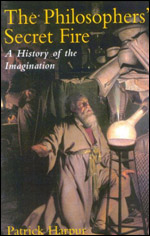 The Oonark Eskimos were unimpressed by man’s lunar landing. “That’s nothing,” said one. “My uncle went to the moon lots of times.” But in a culture as hostile as ours to the wisdom of vision and enchantment, the authenticity of such metaphorical experience has been denied. With matter defined as the only reality, things as “immaterial” as the soul, imagination, or less visible worlds are deemed to have no substance and therefore not to matter: Even as I write, Professor Stephen Hawking is on the air declaring belief in God to be infantile.
The Oonark Eskimos were unimpressed by man’s lunar landing. “That’s nothing,” said one. “My uncle went to the moon lots of times.” But in a culture as hostile as ours to the wisdom of vision and enchantment, the authenticity of such metaphorical experience has been denied. With matter defined as the only reality, things as “immaterial” as the soul, imagination, or less visible worlds are deemed to have no substance and therefore not to matter: Even as I write, Professor Stephen Hawking is on the air declaring belief in God to be infantile.
In this context, Patrick Harpur’s brilliant new study of the imagination, The Philosophers’ Secret Fire: A History of the Imagination—impassioned, wise, wry, humane, full of dynamic scholarship and inspired argument—is especially welcome. A fascinating, beautifully written history, not only is it intellectually meaty, overflowing with telling insight and detailed example, but on a heart level it reminds us of the deeply healing effects of a more generous and imaginal way of seeing. I found myself reviewing my own life in a new way: Decisions driven by promptings from intuitions or dreams no longer seemed crazy, but full of divinest sense; I was left vindicated and reassured, with a renewed trust in the unconscious.
The problem is less one of ignorance than amnesia. In our forgetting of a larger, more sacred vision, our literalism—taking this too solid world as the only truth—has become a kind of curse. For the ancient Greeks, truth was aletheia—“not forgetting”—and learning less an act of cognition than recognition: a process of remembering. Since incarnation itself was held to be a falling away from wholeness—the Primary Imagination, out of which we are born and to which we return—the deepest forms of human knowledge and creativity could not be more than partial recoveries of this original state.
Harpur’s powerful chronicle of this eclipsed tradition of otherworldly beings—angels, devils, gods, sidhe, the whole prolific realm once known as “faery”—helps us remember a way of inhabiting the world that is more ambiguous and shape-shifting than the dull secularism that has come to prevail these last three centuries. His “daimonic” reality—close to Jung’s “psychic” and Hillman’s “imaginal”—invokes a world that is inner as much as outer, where the imagination may not come from us so much as contain us: “The sin of the ego is to wish to sever itself from its own source; its tragedy is that it sometimes succeeds.”
Some of the contours of his map of the imagination are familiar—the ideas of Heraclitus, Plotinus and Plato, Coleridge, Eliot and Hughes, Boehme, Blake and Yeats, Jung and Hillman—and the notion that from the early seventeenth century, the falling away of an imaginal reality has gained momentum.
But as he traces the mercurial shifts of a neo-Platonic tradition through the centuries, expertly weaving together Norse and Greek myth, Renaissance magi and alchemists, ancient and modern theorists of dream and the unconscious, Harpur does something new. Part of his genius lies in the rich, nonlinear way he retells the imagination’s history, part is the originality of his contemporary insights. At every turn he draws out the pertinence of a particular idea for our times, rereading our literal culture in a symbolic way. The World Wide Web becomes an unconscious imitation of the anima mundi, Mediterranean holidays under a scorching sun turn into rituals of initiation, tourism a “secular pilgrimage,” Western medicine an echo of the mysteries of the alchemists, Derrida and post-structuralism a debased version of cabalism, anorexia a hunger for a meaningful entry into society—all inverted attempts to invent ritual that is otherwise lacking.
It would be hard to overestimate the value of Harpur’s book or to praise it too highly. Packed with fabulous detail at which I can only hint here, it convinces us once again that everything is soul. We’re offered a timely reminder to recall our mystical selves, to conceive of possibilities of transformation, to remove constraints from our limited notion of reality and celebrate life’s infinite and sacred inventiveness.
And without this restoration, how can we move forward? It is the ability to imagine ourselves in the place of another that is the essential movement behind love; if the imagination is atrophied, so is the heart. A world that fails to foster the imagination fails to foster compassion—and the lethal consequences of that we know only too well.
Appetizer
And it is true, if only because all stories, even tall ones, embody an imaginative truth. “Everything possible to be believ’d,” asserted Blake, “is an image of truth.” Evolutionists are guilty of idolatry, not because they worship false images, but because they worship a single image falsely, fixing the wealth of nature’s metaphors in a single rigid mode and so obstructing the fluid, oceanic play of imagination, so appalling to Darwin, yet so essential for the soul’s health.
—The Philosopher’s Secret Fire